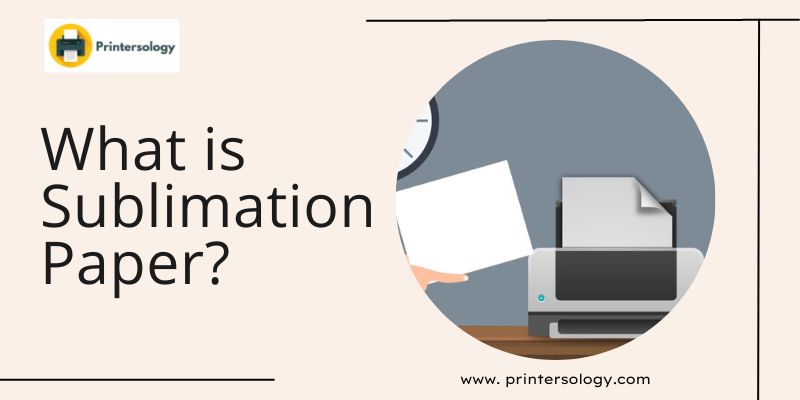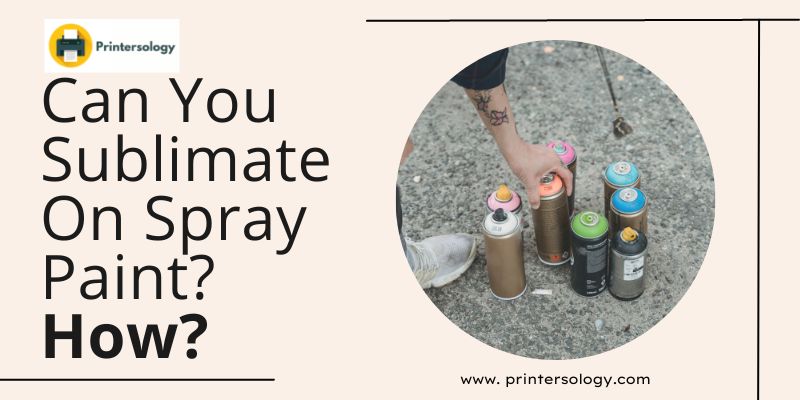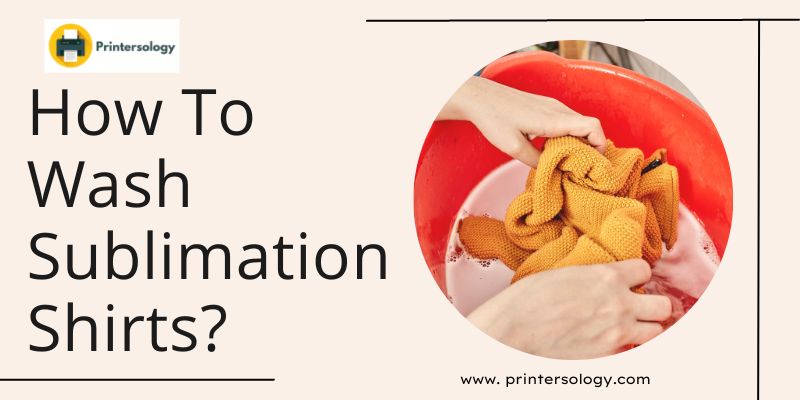What Is a Sublimation Paper & How To Use It Correctly?
When I was new to sublimation printing I also had the same questions in my mind like what is sublimation paper, what’s so special in it, how it’s different from regular paper, and why it is necessary. So, I know exactly what you would be thinking right now. So sit back and relax, I’ve got you covered!
In this article, I will clarify all the concepts and provide answers regarding the paper used in sublimation, its uses, and everything related to it.
What Is a Sublimation Paper?

Sublimation paper is different from normal paper because it has a polyester coating on it to withstand high temperatures. Thanks to this coating, the paper can easily absorb the sublimation ink, and when it comes under heat, it helps transfer the ink to the object’s surface instantly.
All of these things are impossible with normal paper. Always choose the best sublimation paper as it plays a vital role in getting vibrant results.
How To Use Sublimation Paper? Step By Step Guide
Now you know what sublimation paper is, let’s see how you can use it effectively for sublimating designs on different substrates (items that you are sublimating). Because in regular printing you print on paper and that’s it, you’re done. But that’s not the case here, after printing your design/image on paper, you’ve to transfer it to the substrate. If you don’t do that carefully, you might end up wasting your paper and substrate.
So let’s learn how it’s done properly.
Step One – Print Images Or Designs Correctly
The first step is simple, once your image or design is ready. Print it onto sublimation paper using your sublimation printer. But there are a few things you need to consider while printing.
1. Make sure to set mirror mode for your image, particularly the one that has the text, before printing.
2. You’ve to print on the correct side otherwise it won’t transfer to the substrate. The correct side of the sublimation paper will be glossy and brighter compared to the other side. It will have a smooth coated surface, which you can feel by touching the paper. (For your ease, some brands either add a watermark or have different colors on the backside so you know which side to print. But even if they don’t, you now know how to identify.)
Step Two – Sublimate The Image Or Design Onto Substrate
To transfer your image or design from paper to substrate, you’ve to heat press it at a specific temperature and time. Different substrates and paper require different heat settings. This is a very important and tricky part, but let’s make it easy for you.
Pro Tip: Go with the brand that has an instruction manual in the paper pack for heat settings. So you don’t have to spend a lot of time experimenting.
Things got simple. Right?
But let’s assume you have bought the one which doesn’t have instructions on it. Well, in that case, you can simply search what are the ideal settings for that specific substrate you’re sublimating on. Use them as a starting point and see what results you get and then increase or decrease temperature and time accordingly.
If it’s a t-shirt, 385º F (for 40 – 60 seconds) would be good; for a tumbler, you can try at 365º F; the temperature settings are different for each material, so you’ve to test yourself to make sure what’s working best for you.
Once you’ve got the right settings, then place the image upside down, set it with heat-resistant tape so it doesn’t move, and put parchment paper or a Teflon sheet on it. Now you can sublimate the image, so press the heat press platen, and your sublimation design will be ready in a few moments.
Note: Wait for a few minutes until the ink dries. Let it cool down and then check.
Sublimation Paper Vs. Heat Transfer Paper
A common question beginners ask is why we can’t use heat transfer paper instead of sublimation paper. After all, the heat transfer paper also transfers the design on the object when it comes under a heat press machine.
The answer is simple: heat transfer paper helps print the object’s design by adding a layer on the top. At the same time, sublimation paper comes with a chemical coating that can hold sublimation dye and help merge the design to the substrate.
In brief, from the sublimation paper, you can integrate the design into the object surface. But heat transfer paper only creates a layer over the object’s surface which is less durable.
Frequently Asked Questions
1. Can I use sublimation paper for the inkjet printer?
You can’t use it with all inkjet printers because they aren’t made for this purpose. But if you have an inkjet printer like Epson, that can be converted, then you can convert it to a sublimation printer and use sublimation paper or even sublimation dye with it.
2. Can you use regular ink on sublimation paper?
You can’t use regular ink on it for sublimation purposes. However, if your purpose is to use the extra sublimation papers that you have in the home, then yes, you can use regular ink on it and print images. But remember, it can’t be used for sublimation.
3. Can I use copy paper for sublimation?
Yes, you can use copy paper for sublimation, but not all types of copy paper. Check the information behind the copy paper package; if it’s written that the papers can withstand high temperatures, then they can be used for sublimation. But remember, you won’t get high-quality results with them.
4. How many times can you use a single sublimation paper?
You can’t reuse sublimation paper; they are intended for one-time use only.
Final Words
I hope you’ve found all the answers to your questions regarding what a sublimation paper is and how it works. Remember, it is an essential part of sublimation printing; without it, you can’t sublimate anything. Also, its quality should be good; otherwise, you will get dull prints because they won’t transfer the colors properly onto your substrate.






